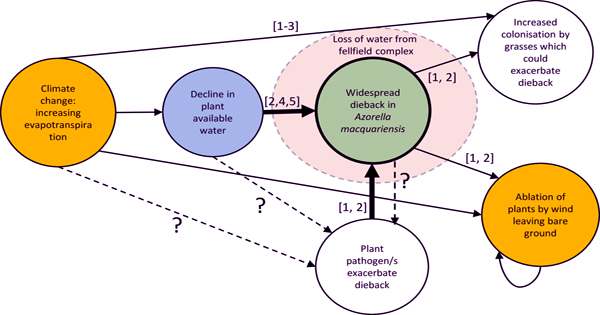Many life forms on Earth are adapted or destroyed in the face of climate change and other environmental shocks. Flowers around the world now seem to be changing their color, desperate to keep pace with the changing planet. This rapid renovation could come at a huge cost to the plants. Because of climate change and other environmental upheavals, flowers
are facing transformation or extinction. In a futile attempt to capture the developed world, it now seems that flowers are developing their color all over the world.
A new study published in the Journal of Current Biology suggests that over the past 755 years, ultraviolet (UV) pigments in flowers have increased in response to rising temperatures and the thinning of an ozone layer. The results indicate that UV-absorbing flower pigmentation improved in the second half of the 20th century. Indeed, the degree of global petal UV
pigmentation has increased at an average rate of 2% per year over the last seven decades. Not coincidentally, over the decades the levels of pigment have been mirrored very closely by rising temperatures and ozone depletion in the atmosphere.
Ozone is a gas in the Earth’s stratosphere that absorbs UV radiation from the atmosphere. Considering that the total amount of ozone in the Earth’s atmosphere has been gradually declining since the 1970s, More UV radiation has been released into plants and other life forms. Climate change often induces more extreme UV radiation. Plants need sunlight to succeed, but like human skin, too much sunlight will kill them. Some roses
are not visible to humans, such as red rose petals or yellow daffodils. Many pigments, including UV pigments, are opaque to the human eye, but the flower is used to attract pollinators and protect against UV radiation, such as sunscreen. So, although the flowers do not look different from us, they have changed a harsh place in a surprisingly short time in an attempt to adapt to the changed conditions.
Not all flower petals are equally affected. First, the pigments that ozone depleted were further altered. Second, exposed pollen plants were also more likely to increase pigmentation because this part of the plant is extremely vulnerable to UV and high-temperature pressure can make pollen feel infertile.
It may sound like positive news that certain flowering plants have begun to respond to changes in their habitats, however, researchers warn that this change in pigmentation could come at a high cost to plant reproductive success, as pigmentation is one of the main sources of pollination. In particular, the difference between the UV-absorber and the UV-reflective
parts of the petals may become damp after this adaptation, making it more difficult for plants to influence any passing pollen.















